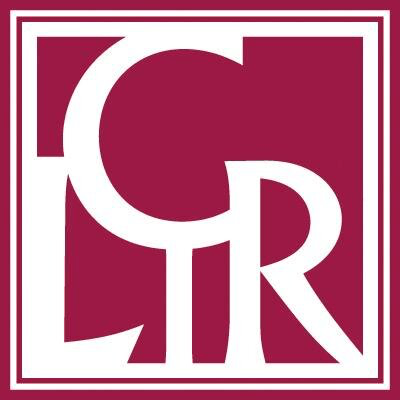Home > Hidden Collections > Program History
In 2008, with the support of The Andrew W. Mellon Foundation, the Council on Library and Information Resources began investing in innovative and efficient approaches to describing rare collections through Cataloging Hidden Special Collections and Archives: Building a New Research Environment. The impetus for this program was a widely shared acknowledgement of the need to rethink cataloging methods toward greater standardization, efficiency, and scholarly impact. The urgency of this need, explored through a decade of research beginning in the 1990s, compelled the Foundation and CLIR to create a national program that would fund the creation of records for unique cultural heritage that would be available through the internet and the Web. The Cataloging Hidden Collections proposal (pdf) submitted by CLIR to the Foundation is available to view.
 By 2014, when the program announced its final awards, CLIR had provided 129 cataloging grants totaling over $27.5 million to a wide variety of institutions in the United States and Canada. A report of the program’s outcomes was published by CLIR in September 2019.
By 2014, when the program announced its final awards, CLIR had provided 129 cataloging grants totaling over $27.5 million to a wide variety of institutions in the United States and Canada. A report of the program’s outcomes was published by CLIR in September 2019.
 Cataloging Hidden Special Collections and Archives was conceived as a kind of incubator which, if successful, would contribute to a shared understanding within professional and academic communities that while all special materials are by nature local, creating standardized descriptions of them that can be accessible anywhere and anytime alongside related but dispersed collections is an exceptionally important goal. Grant recipients have generously shared their experiences, resources, and lessons learned with others through the Hidden Collections Registry, program symposia in 2010 and 2015, and publications such as Innovation, Collaboration and Models—Proceedings of the CLIR Cataloging Hidden Special Collections and Archives Symposium, March 2015. CLIR also created an educational resource called Strategies for Advancing Hidden Collections (SAHC), centered around a series of six 90-minute recorded webinars and a resource library of references related to techniques and best practices for increasing the visibility, usability, and sustainability of collections in the gallery, library, archive, and museum community.
Cataloging Hidden Special Collections and Archives was conceived as a kind of incubator which, if successful, would contribute to a shared understanding within professional and academic communities that while all special materials are by nature local, creating standardized descriptions of them that can be accessible anywhere and anytime alongside related but dispersed collections is an exceptionally important goal. Grant recipients have generously shared their experiences, resources, and lessons learned with others through the Hidden Collections Registry, program symposia in 2010 and 2015, and publications such as Innovation, Collaboration and Models—Proceedings of the CLIR Cataloging Hidden Special Collections and Archives Symposium, March 2015. CLIR also created an educational resource called Strategies for Advancing Hidden Collections (SAHC), centered around a series of six 90-minute recorded webinars and a resource library of references related to techniques and best practices for increasing the visibility, usability, and sustainability of collections in the gallery, library, archive, and museum community.
 Large amounts of materials still await cataloging in cultural heritage institutions, and CLIR recognizes that this work remains an important priority. However, in keeping with CLIR’s mission to inculcate innovations in practice that support the creation of new knowledge, CLIR designed a new program in 2014; its goals were to facilitate complete access to rare cultural artifacts online and to learn and promulgate ways for collecting organizations to build capacity for this work.
Large amounts of materials still await cataloging in cultural heritage institutions, and CLIR recognizes that this work remains an important priority. However, in keeping with CLIR’s mission to inculcate innovations in practice that support the creation of new knowledge, CLIR designed a new program in 2014; its goals were to facilitate complete access to rare cultural artifacts online and to learn and promulgate ways for collecting organizations to build capacity for this work.
In January 2015, CLIR launched Digitizing Hidden Special Collections and Archives: Enabling New Scholarship through Increasing Access to Unique Materials. Like its predecessor, Digitizing Hidden Collections was designed to fund projects in which locally executed protocols contribute to a national good, using methods that are thoughtful and subject to wider adoption. By encouraging strategic collaboration and communication among this program’s grant recipients through the programs of the Digital Library Federation and special events such as the 2022 Digitizing Hidden Collections Symposium, CLIR expects to help broaden understanding of the complexity of these issues in the professional communities responsible for rare and unique collections. The earliest Digitizing Hidden Collections proposal (pdf) program is available to view.
The first awards for the Digitizing Hidden Special Collections and Archives program were publicly announced in January 2016, and the Andrew W. Mellon Foundation generously agreed to support five additional rounds of funding since that time. CLIR announced the program’s final slate of awards in 2021.
In February 2021, CLIR announced the transition of the program to Digitizing Hidden Special Collections and Archives: Amplifying Unheard Voices. This new iteration of the longstanding program funds projects to digitize materials that deepen public understanding of the histories of people of color and other communities and populations whose work, experiences, and perspectives have been insufficiently recognized or unattended. By funding a cohort of academic, independent, and community-based organizations to digitize now-unavailable or underutilized collections, CLIR aspires to cultivate broad recognition of the value of creating access to resources that document historically marginalized people to spur and inform the advancement of social justice. CLIR granted the first awards through Amplifying Unheard Voices in 2022. During this initial funding cycle, an assessment team conducted a study of the program’s implementation, resulting in a public report published in February 2023. Recommendations from this study shaped a renewed call for applications issued in August 2023.

Sharon manages grant program-related systems, oversees grantee onboarding and support, and handles outreach and communications for CLIR’s two active regranting programs, Digitizing Hidden Collections: Amplifying Unheard Voices and Recordings at Risk. Sharon is the host of the Material Memory podcast seasons three and four, and leads the newest grant program, Safe Spaces.

Alyson handles grant modification requests, monitors report receipt and compliance, and ensures information and systems are up to date for CLIR’s two active regranting programs, Digitizing Hidden Collections: Amplifying Unheard Voices and Recordings at Risk.

Jane assists the program officers with customer service, communication and assessment activities for CLIR’s two active regranting programs, Digitizing Hidden Collections: Amplifying Unheard Voices and Recordings at Risk.

Louisa oversees CLIR’s two active regranting programs, Digitizing Hidden Collections: Amplifying Unheard Voices and Recordings at Risk.

Council on Library and Information Resources
1800 Diagonal Road, Suite 600
Alexandria, VA 22314
contact@clir.org
CLIR is an independent, nonprofit organization that forges strategies to enhance research, teaching, and learning environments in collaboration with libraries, cultural institutions, and communities of higher learning.
Unless otherwise indicated, content on this site is available for re-use under CC BY-SA 4.0 License